The 10 best logos of all time
Welcome to Creative Bloq's guide to the best logos of all time. How good your logo is is a vital part of branding success. Of course, the logo is a relatively small part of the overall identity scheme, but to customers on the outside world, logos are perhaps the most important touchpoint for a company. So important that customers can't help but latch onto them and form a bond.
We subliminally take meaning from these marks and we care about them. Often the public responds loudly and fiercely to the introduction of a new logo. And why not? Michael Wolff, co-founder of branding agency Wolff Olins, has argued that a brand belongs to its customers; they define it, because they're the ones who buy its products or use its services. It isn't surprising, then, that logos are discussed far beyond the presentation rooms of global branding agencies in Manhattan or Shoreditch.
Even if you only have a passing interest in graphic design, it’s fascinating to see what the BP logo looked like in 1930, or debate how the Coca-Cola identity has evolved (or not) over the past 125 years. In this article, we've gathered what we think are 10 of the best logos ever. Read on for a look at what makes these logos so strong, as well as insights from the people that designed them.
For tips on how to create a brand mark that will stand the test of time, explore our logo design tips or check out our advice on where to find the best logo design inspiration.
10. I love New York
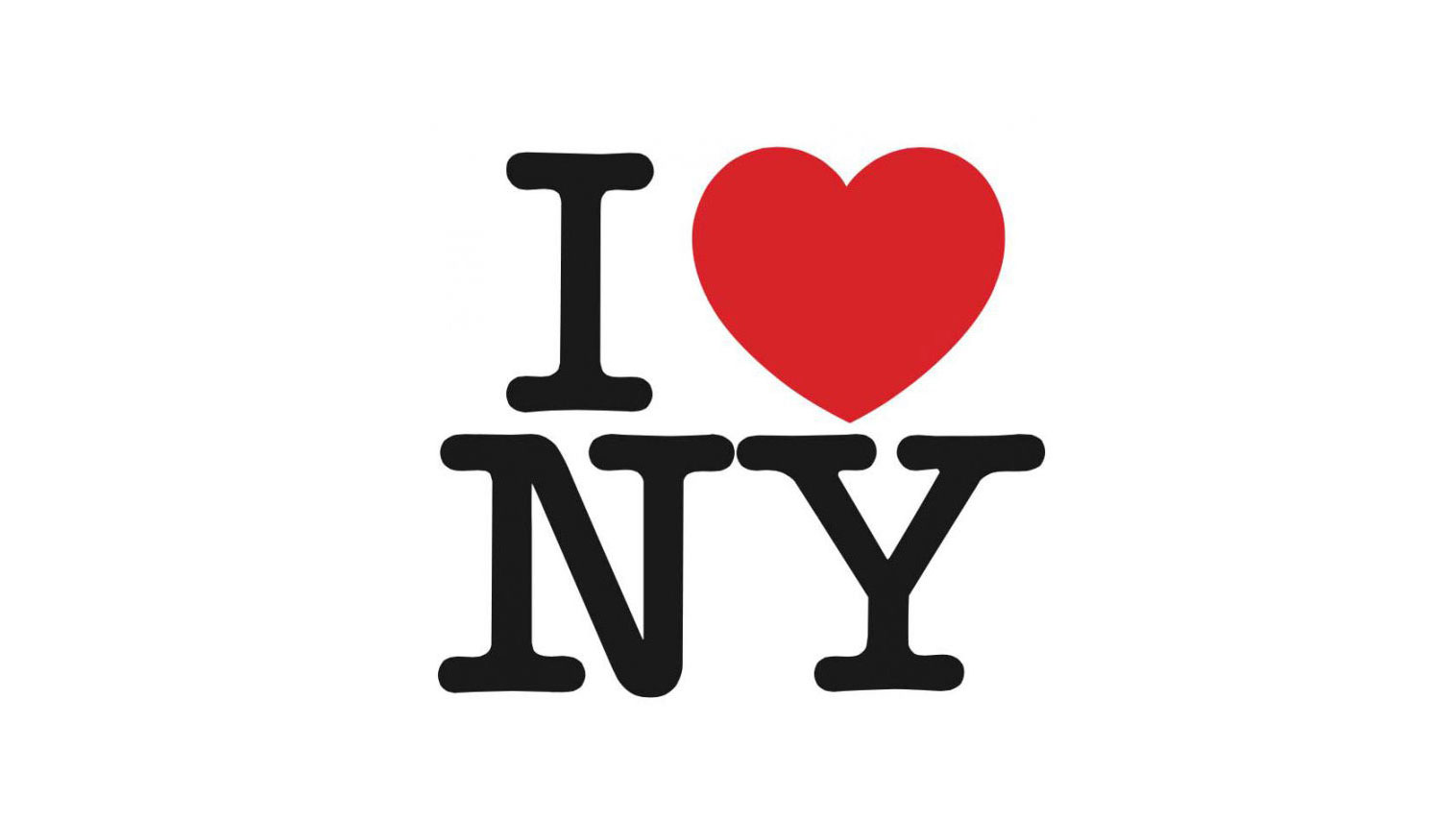
In 1977, Milton Glaser designed the I Love New York logo in the back of a taxi, for a fee of zero
The I Love New York logo seems ubiquitous and eternal today, but it was designed by Milton Glaser in 1977 for the New York State Department of Commerce in a moment of inspiration during a taxi ride through his beloved city. So universal is the design that ‘to heart’ has now become a verb, colloquially speaking.
Here, the legendary designer discusses his love for his home city, as well as his body of work and the role technology plays in his design practice...
How important is New York City to your work?
"I’ve often thought about it and I can’t imagine a life, for me, outside of the city. I would have found another way of being in the world and doing work, I’m sure. All I know is the nature of this city: its complexity; its diversity; that it offers so many opportunities for learning; and the fact that it’s so contradictory. New York is not the most beautiful of cities. It changes all the time. It’s not a city that imposes its vision on people who come in; they impose their vision here."
"Everything is open, everything is up for grabs, everything is to be questioned. That aspect of not accepting anything as being ultimate or the final truth seems to me a source of great vitality, energy and options for people. Anything can happen here. And that, of course, creates a very different environment than a culture where very little can happen."
Is there enough understanding of the past these days?
"Well, the [design] field itself is dominated by fashion and by the idea of selling stuff, so you have to be concerned with what’s currently being done, and the economy is based on the idea of change and new styles, and this year’s whatever. Unfortunately, that’s not the real basis for serious work."
"If you’re more serious about it, you have to be more concerned about durability and ideas that go beyond the moment, so I think the best designers around are always designers that have had a kind of broader look and don’t change with the prevailing wind. If you find that all you’re doing is copying what is already being done, you’ll have no position in the field. You’ll have nothing to offer and, after 20 years of doing it, you’re nowhere."
What is your relationship to digital technology?
"I have an ‘arm’s length’ relationship to it, but I’m also mad about what you can do with a computer. I love working with other people on the computer, sort of like dancing. It’s a way of working collaboratively that’s never been done before."
"But you have to come to it with an existing sense of form. If you don’t have form and an understanding of visual phenomena, and don’t understand how to draw, from my point of view, it’s a very mischievous instrument because it forces you into patterns that it imposes."
Next page: Best logos ever - IBM
09. IBM
The roadmap for IBM’s modern design ethos was set out in the 1950s with the hiring of design consultant Eliot Noyes, who’d worked at the Museum of Modern Art in New York. He brought influences like Charles and Ray Eames, Eero Saarinen and Isamu Noguchi to bear on the company’s industrial design, and hired Paul Rand to create the IBM visual identity in 1956. This move was repeated with the refresh in 1972.
Discover the evolution of the IBM logo below:
Next page: Best logos ever - London Underground
08. London Underground
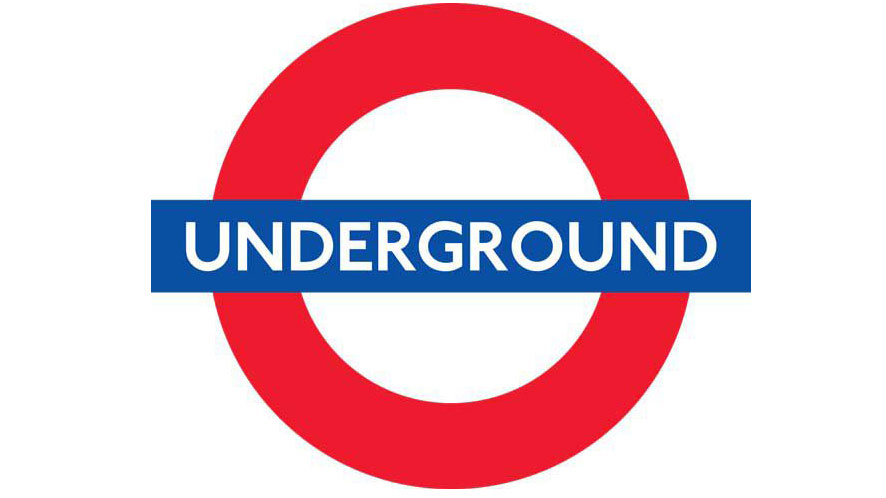
Though it's hard to imagine a simpler logo than the white type against a blue bar, all run across a red thick-stroked circle, the London Underground logo is one of the world's most recognisable. Branding buses, stations and subways in England's capital, it has become an imperishable symbol of the city that created it – and has been more than a hundred years in development.
The design is so distinctive that efforts to change it usually involve tiny tweaks which only the most astute pair of creative eyes wold notice, such as the subtle redesign of the logo's typeface.
Here we take you through the changing face of the London Underground logo:
Enduring Appeal
In his book, A Logo for London, David Lawrence traces the history of London's most enduring sign, attempting to pin down the logo's enduring appeal. "The logo is sufficiently abstract and yet so widely reproduced that it represents many things for many people – city, transportation, culture, place, a unified system, cool design. It's this that makes it a flexible, enduring brand," he says. It's never been out of fashion, he adds, "because at worst it tirelessly sits in the background telling us where to catch a bus or train."
Next page: Best logos ever - The Red Cross
07. The Red Cross
The red cross emblem is an incredibly economical symbol, but one that delivers its meaning – of neutrality and protection – in the most effective ways.

The red cross emblem, 1864
It's a simple mark, but one that conveys its message immediately. With no exact specification of red, and the only guidelines instructing that the cross should always have arms of equal length and be shown on a white background, the red cross emblem is easily displayed in places where materials to create perfect design might not be available.
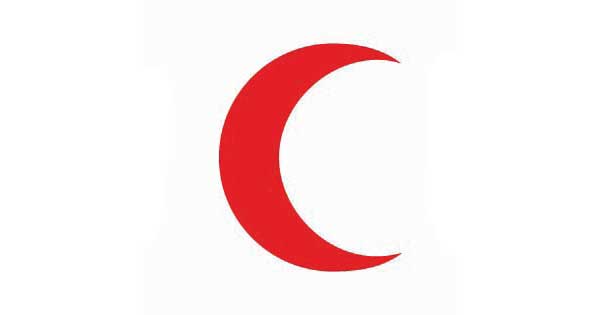
The red crescent, first used by the Ottoman Empire in 1876
The red cross, and indeed the red crescent (first used by soldiers from the Ottoman Empire in 1876 because the red cross reminded them of the crusaders of the Middle Ages) is a sign of neutrality and protection in armed conflict. Its use is restricted by international and national laws.

It's a simple mark, but one that conveys its message immediately
Both emblems have the same meaning and status, and have no political or religious significance. The restriction of usage is important here: the red cross emblem must be trusted to signify this neutrality and protection, and therefore unauthorised use is forbidden in international, humanitarian and national law.
Next page: Best logos ever - Target
06. Target
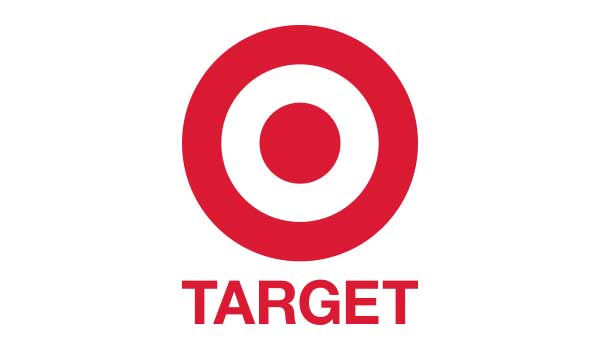
One of the most recognisable brands in US retail, Target now has more than 1,800 stores in the US alone. Its mark was visualised at the conception of the brand name itself and symbolises the company's aim to achieve the perfect in-store customer experience.

In the months before the first Target store opened its doors, director of publicity Stewart K Widdess was tasked to name and brand the new retail store. Legend has it that Widdess and his staff debated more than 200 possible names.
In a moment of inspiration, both the name Target and the now-familiar bullseye (although in a slightly different form) were conceived. The reasoning? Just as a marksman's goal is to hit the centre bullseye, the new store would do much the same in terms of retail goods, services, commitment to the community, price, value and overall experience.

The current version of the logo was designed in 1968, removing a number of the inside rings to simplify the design, and making it a more direct and recognisable symbol for the company.
Next page: Best logos ever - Apple
05. Apple
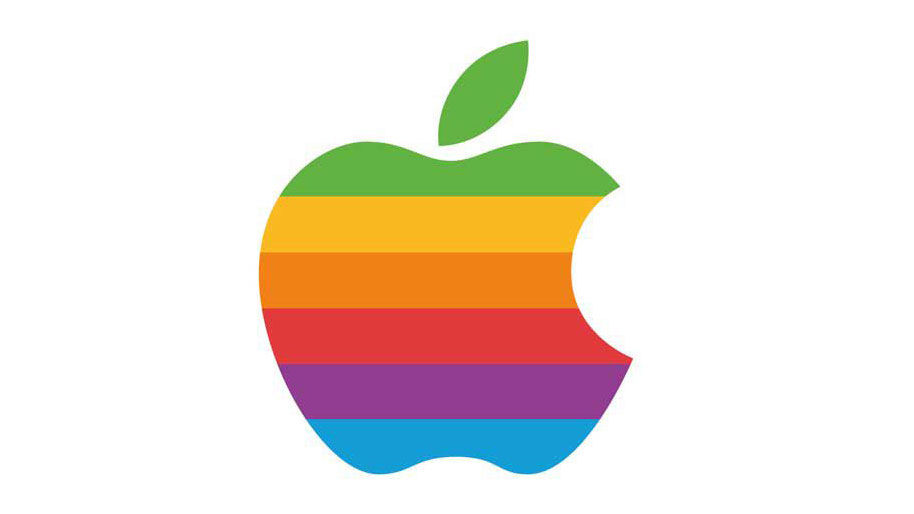
Apple's initial logo was a drawing of Isaac Newton by Ron Wayne in 1976. Steve Jobs knew it would never work as a brand and commissioned a new mark the following year. Since then, the apple's shape has remained the same, aside from some geometric tweaks for the 1998 refresh, and the move from coloured stripes to a solid silhouette. Rob Janoff's logo has remained an important element in Apple's global success story since its inception.
In pictures – how the Apple logo developed:
We spoke to graphic designer Rob Janoff, the man handed the job of designing a logo for a company called Apple Computer...
What was your original brief and what did Apple want the logo to convey?
"I didn't have much of a brief, when I think about it. It was a few words from Steve Jobs, which were, 'Don't make it cute.' I think he was referring mostly to the typography."
"Don't make it cute"
Steve Jobs
How did you come up with the idea of an apple with a bite taken out of it?
"When you take a bite out of an apple, it stays sort of bite-shaped, it doesn't collapse as a peach would. It was to make it look more like an apple, and to give it scale – because people's mouths are a certain size and an apple is a certain size, and the bite would be a size relater."
How many versions did you present?
"I've never done this before or ever again, but I was just so sure about this design that there was just one version. However we did have a back pocket one, which was the apple without the bite in it, in case they thought it was a bit too cute. That never got shown."
For more about the Apple logo, including how much it cost to digitise, check out our recent interview with Janoff.
Next page: Best logos ever - Woolmark
04. Woolmark
One of the world's most recognisable logos doesn't belong to a commercial brand at all – but who designed it?
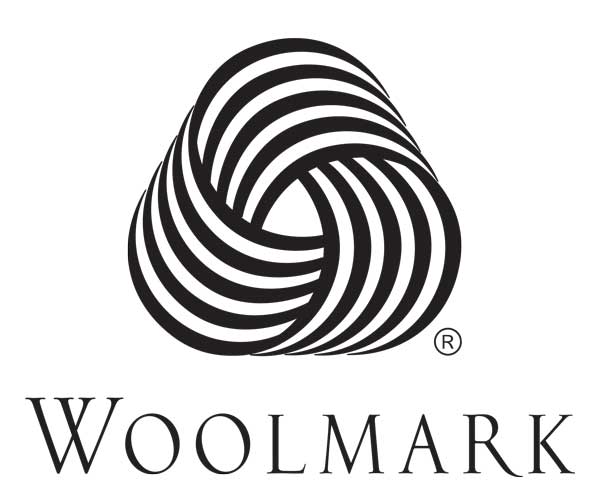
The Woolmark logo, designed in 1963
Formed from five black bands that crisscross to form a traditional skein of wool, the Woolmark logo is soft, elegant and organic. It's perfectly suited for its purpose: representing the use of pure wool in a product. The logo is officially credited to Francesco Saroglia, as the winner of a design competition. Nothing further is known about Saroglia, however, and it's believed that Italian designer Franco Grignani was responsible for the logo.
A mark of quality
Simplicity is often the key quality of a perfect logo. So what could be more representative of a mark that's meant to signify a garment is made of pure wool than an elegantly drawn skein of wool? The logo is elegant and instantly recognisable without being overly detailed.
"People associate it with the product they see on it: wool"
Rob Langtry, Woolmark
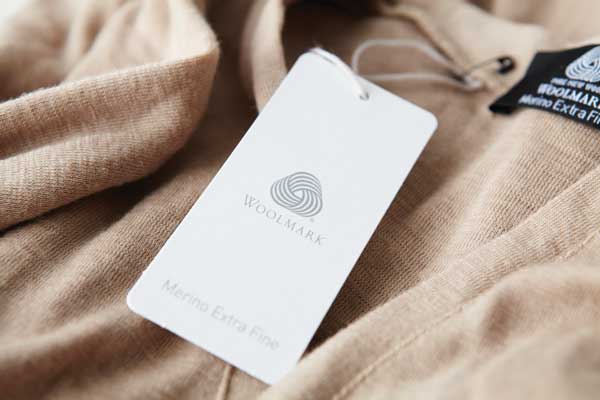
Because it's instantly recognisable, the mark also speaks of the qualities of wool. "In an age where we've moved far too quickly to synthetic fibres and disposability, there's something reassuring and positive about a mark that represents a natural, renewable resource," enthuses Rob Langtry, global chief strategy and marketing officer at Woolmark.

Next page: Best logos ever - Nike
03. Nike

Ticking all the boxes for $35
The Nike emblem is one of the world's most recognisable, and it's often the simplest ideas that are the best – as proved by this mark created by Portland student Carolyn Davidson in 1971. Paid $35 for the logo at the time, she later, in 1983, received a gold swoosh ring embedded with a diamond and an envelope containing Nike stock from founder Phillip Knight. It's perhaps one of the most interesting – and most widely reported – stories in logo design history.
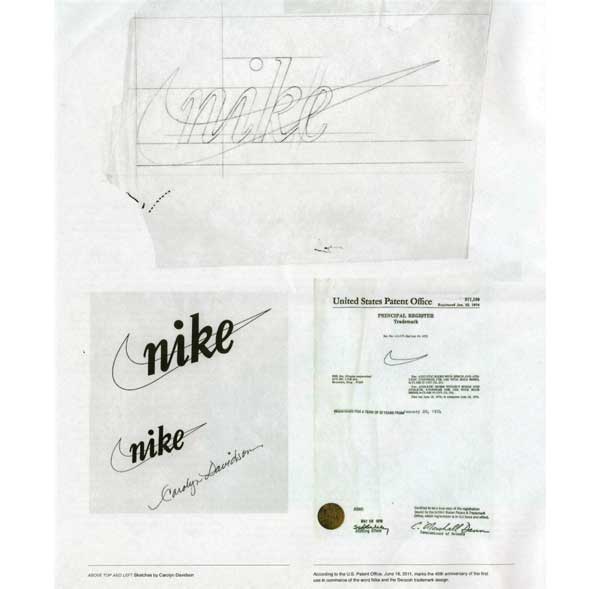
Victory
Davidson's tick-like logo was seen as a symbol of positivity, but it's actually the outline of the wing of the goddess Nike (who personified victory). Her logo was subsequently registered as a trademark and, aside from some tinkering with the Nike lettering, has remained unchanged.
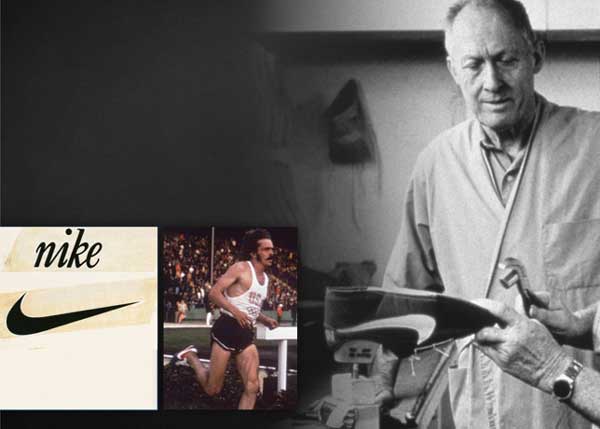
Chasing Originality
According to Nike's website, upon first seeing Davidson's design, Knight said: "I don't love it, but it will grow on me." In 2011, Davidson told OregonLive.com that it was a challenge to come up with a logo that conveyed motion and that Phillip Knight was very impressed with the stripes of rival company Adidas, so it was increasingly hard to come up with something original.
Next page: Best logos ever - Shell
02. Shell

It was French-born designer, Raymond Loewy who drew the first modern Shell logo. He simplified the logo to make it more recognisable and bold at a distance – essential when your logo is primarily placed on the side of a road with traffic going past at speed. He gave the lettering and red border of the shell itself greater impact.
View the below gallery to see the changing faces of Shell's iconic logo:
Next page: Best logos ever - FedEx
01. FedEx
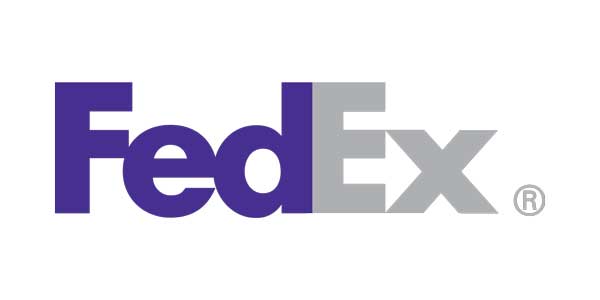
Replacing the original Federal Express logo, which was designed in 1974, the new logo introduced a name change and a cleaner, simpler look and feel. Purple was retained as a brand colour with orange added, and the FedEx logo thrives on its use of white space. It was applied to 600 aircraft, and 30,000 ground vehicles.
With that sneaky little arrow nestling between the E and the X, the FedEx logo perfectly embodies what the company does – moving letters, boxes and freight from A to B. It has won over 40 design awards, and even though it was unveiled in 1994 it's still a favourite.
We spoke to Lindon Leader, who was senior design director at Landor Associates when it was designed...
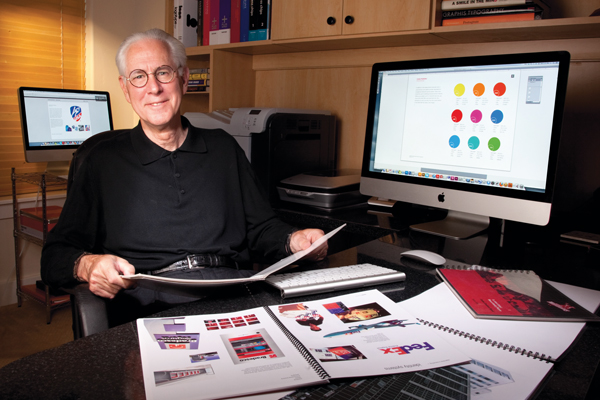
Lindon Leader was senior design director at Landor Associates when the FedEx logo was designed
It's over 20 years since the FedEx logo was designed. What do you remember best about the project?
"I've always said it takes a great client to make a great project. Frederick Smith, the CEO, allowed us to do our job, and simply said to me, 'Lindon, if you feel that our trucks need to be pink and green, just give me a good reason.' In other words, he was trusting us."
"If you feel that our trucks need to be pink and green, just give me a good reason"
Frederick Smith, FedEx CEO
What were the key things the client wanted the identity to communicate?
"The primary attributes of the FedEx brand are precision, service, speed, reliability. They're the kind of attributes that you just don't develop overnight – no pun intended, given their original tagline."

How did you approach it?
"We conducted a nine-month global research study that revealed that customers were generally unaware of Federal Express' global scope and full service capabilities."
"Customers had come to say 'FedEx a package' even when they were using other shippers. So the process of express shipping had become generic. We advised them that the company needed to leverage its most valuable asset, and that is the FedEx brand."
"On an international scale, 'federal' had some negative connotations in certain parts of the world – Federalists in Latin America; Federal Republic of Germany. That was among the reasons why moving to the name FedEx was going to be so much more communicative for them."

What were the other potential logos like?
"Each of the five candidates did pretty much what the current identity is doing. They maximised the impact of the identity, whilst also maximising the colour white. It's on their envelopes, it's on their vehicles, it's on their aircraft because white is traditionally associated with Federal Express."
Tell us about the use of white, and your process of subtraction?
"I cannot tell you how many times I fight with a client who says, 'I'm paying an enormous amount of money to pay for an ad in a magazine and you're telling me you want 60 per cent of it to be empty space?' On the one hand I can understand where they're coming from. But basically the average client does not have a sophisticated enough appreciation of white space to understand that it can be a strategic marketing tool."

For you, what is it that makes a logo last, and when do you think a company should change its logo?
"From a historical perspective, back in the 50s, 60s and 70s, a company would come to a design agency and look to, more often than not, refresh an identity that had been around for quite a while. In those days what a client hoped to accomplish was to get 20 years out of a logo before it needed to be refreshed or changed."
"If you take Silicon Valley start-ups out of the equation, these days companies are looking to refresh down to as little as five, maybe 10 years, if you're lucky."
Related articles:
- 5 big logo design trends for 2020
- These logo design mashups will mess with your head
- 5 logo design apps for beginners
Contributer : Creative Bloq
 Reviewed by mimisabreena
on
Wednesday, January 01, 2020
Rating:
Reviewed by mimisabreena
on
Wednesday, January 01, 2020
Rating:
















No comments:
Post a Comment